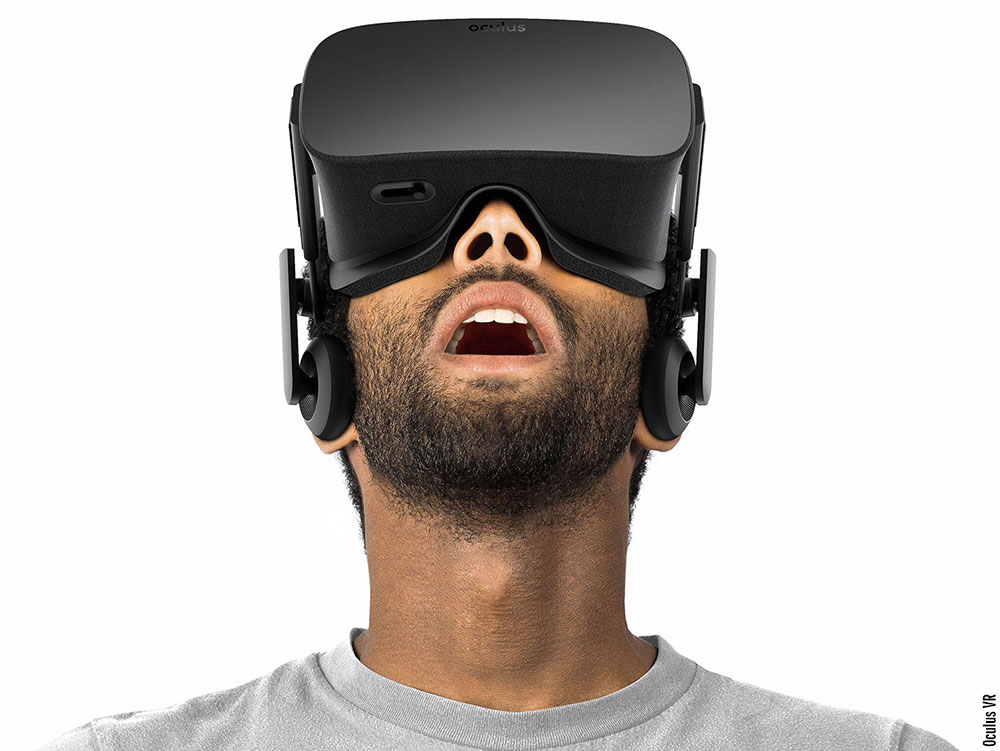By Harrison Brewer, Staff Writer
“…We become voyeurs rather than participators and there is a constant disconnection between us and what we are looking at”
Seeing is subjective. Where one chooses to look is decided purely by the person who is doing the looking. Perspective and placement is instrumental in today’s art mediums. Whether its fine art, photography or film, art is restricted by frames. The photographer chooses the shot, the artist chooses the landscape and the director chooses the scene and we, the viewers, are simply passive spectators of whatever we have been chosen to view. We become voyeurs rather than participators and there is a constant disconnection between us and what we are looking at.
However, as technology progresses, so to does art, allowing even greater immersion into times, places and scenes for the viewer. To most, virtual reality seems to be something of the future but without us knowing, Montreal was graced with it in our own backyard. Phi Centre in Port Vieux held a small ‘Virtual Reality Garden’ allowing viewers to fit themselves intimately into scenes that often we would not be able to experience fully with 360 degree vision.
The Virtual Reality Garden showed five different short clips that sought to present ‘21st Century Challenges’ in an engaging and innovative way by directly immersing the viewer into these clips through a virtual reality headset supported by a Samsung Galaxy phone. Whilst I was there, I watched ‘Nomands: Maasai’ – a series of scenes of the quotidian life of the Maasai Mara tribe in Kenya. From watching boys throw spears to mothers weave with their kids inside mud huts to simply having the viewer sit face to face with members of the tribe for an extended period of time, these scenes capture a striking sense of intimacy and emotion through the cinematography alone.
However, what stands out is the ability to view what you wish and the necessity to move your head to view the whole scene. As boys push and shove playfully and compete throwing spears, your eyes track the movement as they fly through the air. In the hut, you move your eyes from each person as they speak, occasionally twisting your whole body to see what else is around you, noticing a bed in the corner, some bowls and a door leading to the outside.
“Each experience becomes incredibly individual…”
Rather than simply gazing into a frame, you are immersed in the whole experience and you participate in the activities that you are privy to. The experience becomes so consuming that you are often so engaged that you feel awkward if your gaze lingers before you remind yourself that you are sitting in a chair with a headset on. Each experience becomes incredibly individual as you compare notes with your friends afterwards. You’ll ask if they saw the young boy behind your right shoulder playing with his clothes and they will talk about the flock of birds that flew overhead. This may give the intention of missing important details within the experience but the art of virtual reality lies in the fact that we are socially engineered not to as we swivel our heads to follow conversations or actions just as we do in real life.
One of the most publicised use of virtual reality is in video games and CGI shorts. With the upcoming release of the Oculus Rift virtual reality headset, the gaming scene is aflame with conversation as to what this means for the art form. However, an unsung hero of this innovative genre is the ability to bring framed, two dimensional art into an interactive and three dimensional space. The Dali Museum in St.Petersburg, Florida has created a virtual reality video, much like the ‘Nomands: Maasai’ film, that allows for 360 degree interaction with an artistic imagination of one of Salvador Dali’s most surrealist and mind bending work, Archeological Reminiscence of Millet’s “Angelus”. Blurring the lines of dream and reality, we practically enter the painting, destroying the frame and taking perspective into our own hands.
“…Blurring the lines of dream and reality, we practically enter the painting, destroying the frame and taking perspective into our own hands”
Out of VR’s growing popularity, a fresh art medium has begun to make use of virtual reality headsets to create fascinating new installations. One dynamic art collective from Germany known as Skullmapping have created a multi-sensory experience that uses subtle real-life SFX, 3D mapping and the Oculus Rift headset. They seek to transport the viewer to Ancient Greece to take a trip to the underworld along the River Styx. This interactive experience breaks the common boundaries of frame and viewer and seeks to create an art medium that fully immerses the viewer – sometimes to the point of genuine fear and shock.
VR heralds a new age for artistic license. With innovative technologies being produced daily, art can begin to break the fourth wall and directly engage with us in order to create an experience that is immersive and dynamic. We can become the perspective, taking our experience into our own hands. In a world where we are numbed by overexposure to film, painting and photography, VR will be able to penetrate the comfort zone of viewers, shocking and questioning our experiences as good progressive art should.

